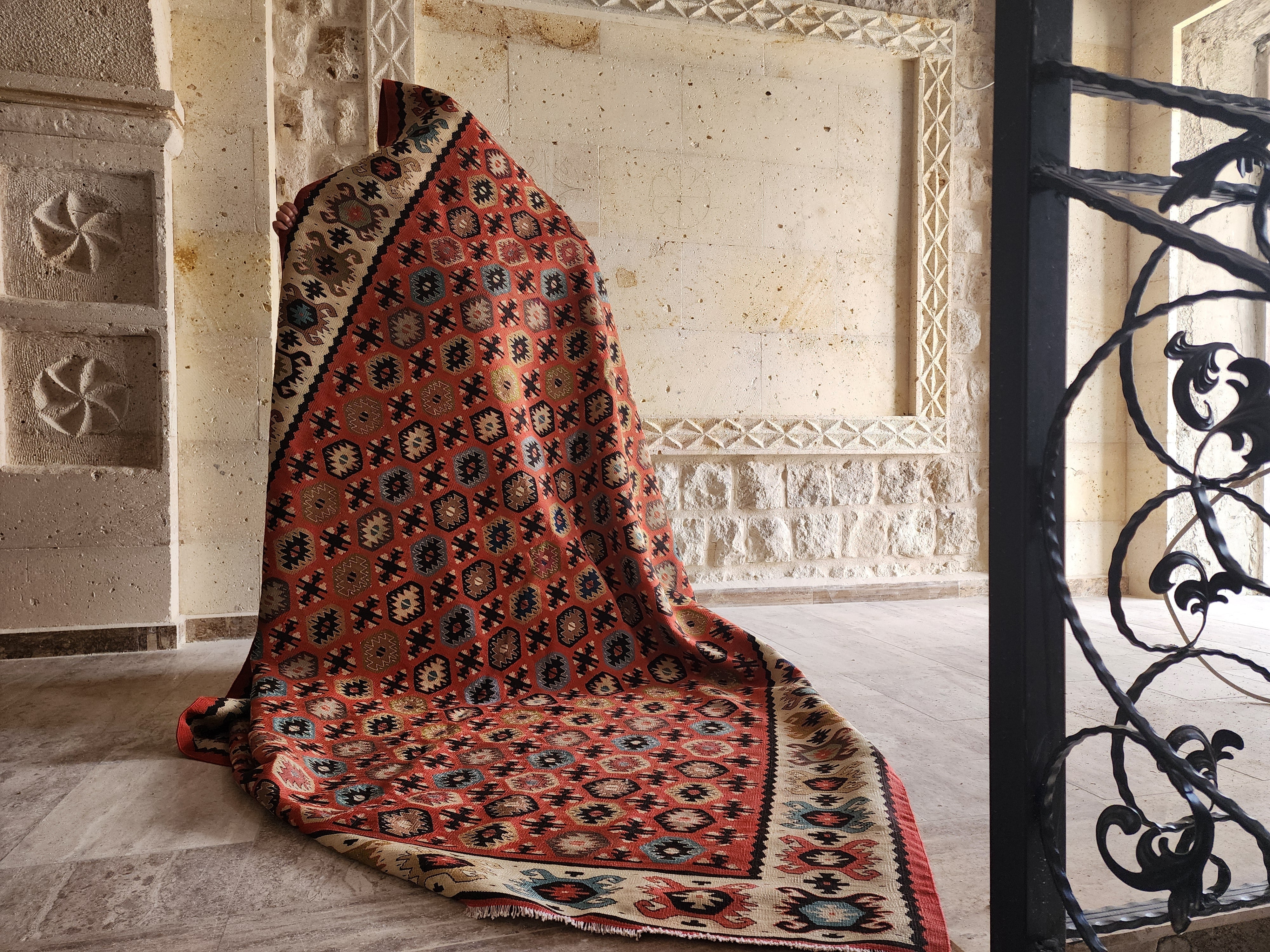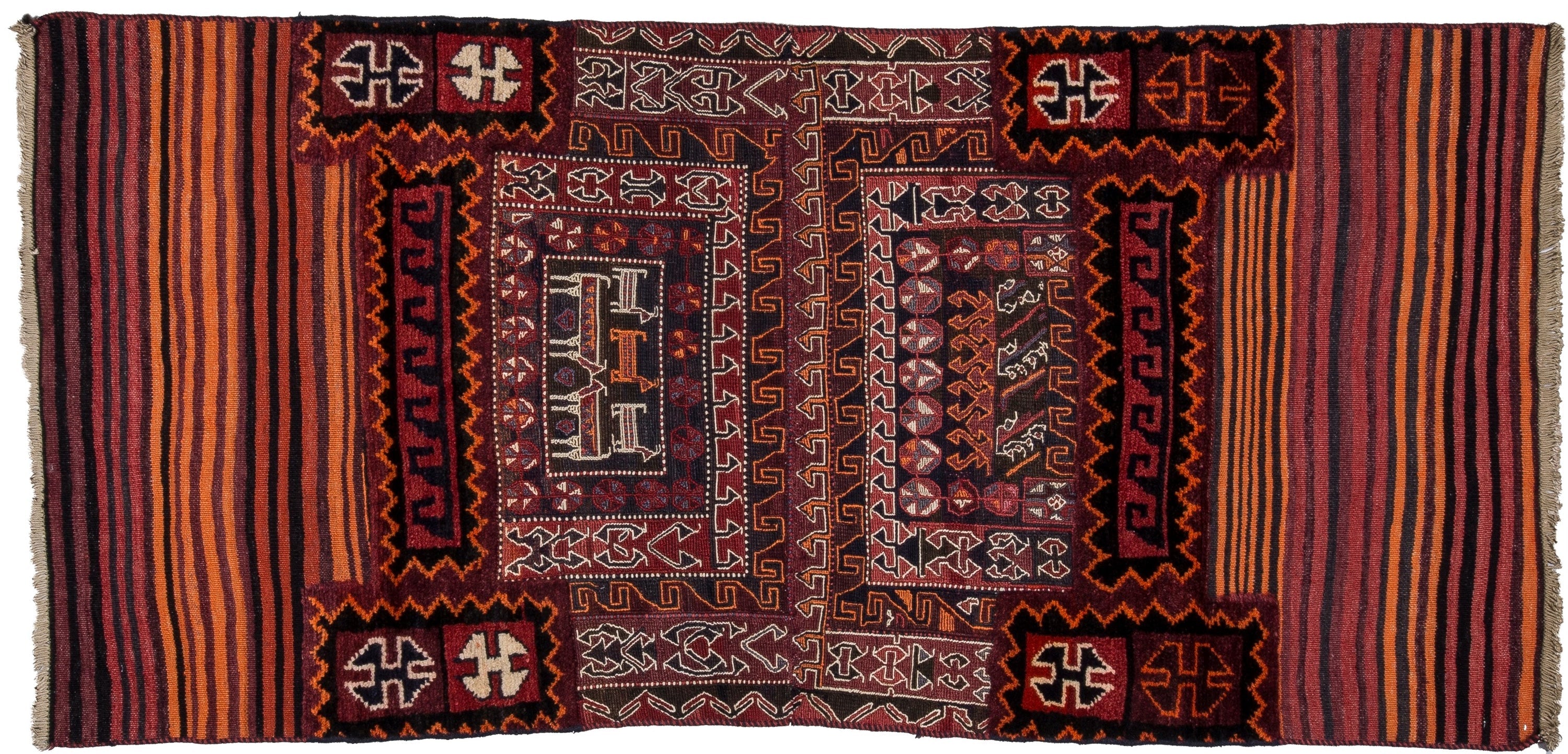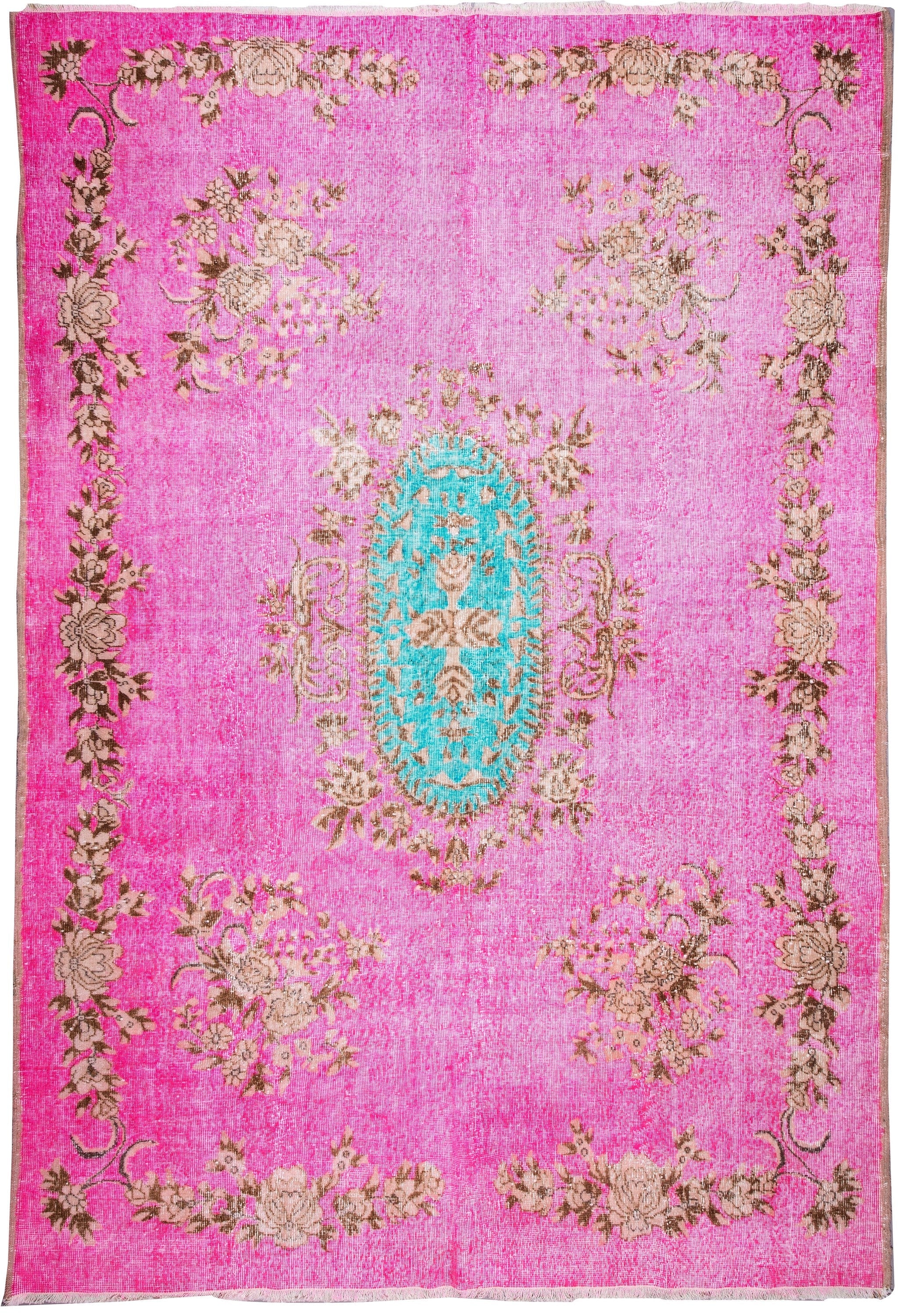
Kilim Rugs
One of the most popular rug type is known as Kilim rug, the best and most widely known kilims in our country are those reflecting a tradition peculiar to themselves. These are woven by sheep raising nomads, from yarns made either from wool or goat’s hair. This kilims are woven as sacks and saddle-bags for the purpose of carrying provisions, in ornamenting houses and tents, and as a cover for cradles, rather than creating an object art. From the surviving specimens found, it is understood that the oldest Turkish covering materials do not go as far back as the XVI. Century.
The Turkish Kilims can be classified as those having or not having an indication of an altar (called ‘’mihrap’’ and meaning a niche in a mosque indicating the position of Mecca), as well as kilims of clans and kilims of non-clans.
Due to difficulties in the technique of weaving, mostly geometric figures have been used, and natural dyes, which are rich as regards to the varieties in colours and are more durable, have been utilized formerly, whereas these have been replaced later by aniline dyes, which are more easily applicable and are comparatively cheaper. It is because of this factthat in the present-day woven kilims, we observe the delimitation of more striking colours. Although the colours used may show differences as regards to regions, the most widely used colours are green orange, blue, lapis, lazuli and red.
Amongst the Anatolia kilims, there are those which are highly known. These are many known as referred to the name of the village, the name of the village. The name of the clan, or the name of the particular family weaving the kilim, or sometimes by the motifs and figures used. For example in a kilim woven by the Balıkesir Yuncu Nomads marks as stigmas in the ground fillings attract attentions. The motif of ‘’the tree of life’’ of shamanistic origins, which is widely used in the kilims of Western Anatolia, are also found in specimens belonging to Kayseri, Sivas and Erzurum tribes. In the kilim of the nomadic and Turkoman clans, a ram’s head symbolize health and power, a bird breaking news of joy and merry-making, a serpent or a scorpion symbolizing the protection agains evel, have been widely used. In some instances, such architectural motifs as used in the mosque or houses.



Leave a comment
This site is protected by hCaptcha and the hCaptcha Privacy Policy and Terms of Service apply.